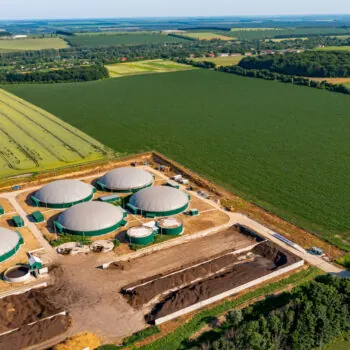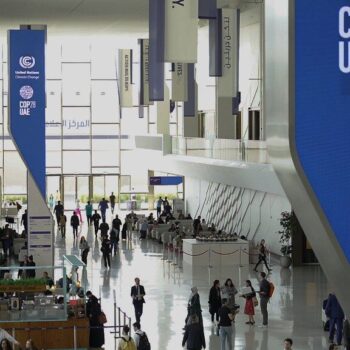The COVID-19 crisis coincides with major tipping points in the energy sector. From renewables now becoming a mainstream energy source, to a shift away from a supply focussed system working in parallel across vectors to one with potentially millions of entry points and interconnections.
This moment offers the possibility of accelerating Europe’s energy transition and increasing social cohesion. The EU’s planned ‘Energy Sector Integration Strategy’ could make this a reality. That is if it dares to find ways to move beyond the existing energy system paradigm.
The current paradigm is aimed at efficiency, competition and security of supply through markets in a static energy system. But new sources of competition for traditional generation and network investments have emerged. So have new political objectives – climate neutrality by 2050 is one of them. A consistent rebalancing from fossil fuel incumbents to providers of new, modern forms of energy is required to achieve a modern, clean and affordable energy system.
This blog outlines three necessary steps for initiating a paradigm shift through the ‘energy sector integration strategy.’ These include; making choices for climate neutrality, delivering the backbone for deep decarbonisation and strengthening the social license of the transition.
Making choices for climate neutrality
In response to the current crisis, politicians are eager to quickly boost consumer demand and employment. Out of many options, investments maximising the potential for sustainable growth should be prioritised. This requires collecting investments behind a clear pathway to climate neutrality and a mission-oriented innovation agenda.
Choices come with risks, but the status quo is the riskiest choices of all and without a plan to manage the risks: an energy system stuck with increasingly uncompetitive fossil fuels and that will not be ready for climate neutrality. For example, transmission system operators model a future energy pathway with a high reliance on fossil- and renewables-based hydrogen without making it clear that this requires an unprecedented upscaling of underdeveloped or non-existent carbon capture and other negative emissions technologies. The EU may still choose this pathway, but cannot afford to find out about the failure of critical assumptions a decade later, as has happened with CCS.
We need ways of monitoring progress and trigger points to adapt the strategy if necessary. This cannot be overseen by a subset of industry stakeholders. With many new energy solutions available on supply and demand side, the infrastructure choices we make need to be informed by a balance of expertise. One option is to add more stakeholders to the mix and let different sectors “negotiate” a model of the future energy system. This is more likely to come up with pathways representing the lowest common denominator, rather than breakthrough solutions and without internal consistence. The better option is to use independent, science-based insight outlining key resilient pathway choices based on regularly updated learning. A model could be the UK Committee on Climate Change. Choices can then be taken by politically mandated decision makers.
Integrating functions of expertise, risk management and learning is a prerequisite for a smooth energy transition. To make the most of new sources of competition, these should be allocated to actors free from political influence. This could take many shapes. We call it a ‘Clean Economy Observatory’.
To make the right choices, there are two more crucial elements of the strategy:
- All policies emerging from this strategy should support climate neutrality by 2050: that means on 1/1/2051, our emissions balance is zero. No offsetting of emissions post-2050, as some of the current infrastructure modelling does.
- We already know that phasing in alternative gases is not enough. With significant carbon and methane emissions of fossil gas, the climate will only benefit if we simultaneously phase out fossil gas – carbon capture can only be a partial and temporary fix.
Delivering the backbone of tomorrow’s energy systems
Over the last decade Europe made big strides on renewables deployment and efficiency, by largely decoupling energy use from growth. But this is not enough. The EU’s long-term strategy shows we need a “high efficiency, high renewables, high circularity” system across all energy system pathways.
Yet, the way the EU plans and rewards infrastructure through the markets and tax system does not make a level playing field for new competitors. When striving for energy security, we need to recognise the contribution of energy efficiency rather than counting up supply sources. When designing markets, we should ensure equivalent services get equivalent access to markets: in the UK, capacity auctions long favoured traditional thermal power plants with their lead time of four years and guaranteed return of fifteen years – and much less for demand-side response measures.
We still need to scale up renewables and focus on strengthening our grids – current processes have not done enough to accelerate renewables deployment. Hydrogen networks can support system stability, but with a sustainable transition geared towards electrolysis-based hydrogen, we need to think of it as a subsidiary to electricity rather than a replacement for fossil gas. The revision of the EU’s cross-border energy networks regulation can help by removing eligibility of fossil fuel infrastructure.
Strengthening the social license of the transition
As the economic fallout of COVID-19 puts pressure on people, ensuring a fair and equitable distribution of costs and benefits of the transition is of utmost importance.
An increase in energy costs affects the poor the most. Decoupling that relationship will strengthen the social license of the transition. By prioritising the vulnerable for public investment on energy efficiency or electric vehicles their household bills can be reduced. This is a much more effective approach to an equitable transition than generic support for fossil fuels. Portugal took a first step when it recently abolished tax exemptions for gas in electricity generation with the revenue reinvested into clean technology deployment.
Supporting the most vulnerable customers to be the “early movers” is essential, as staying behind may mean additional financial costs. For example, as consumers come off the gas grid through energy efficiency and the electrification of heat, those left behind are fewer to share the burden of the costs of network refurbishment or even upgrading.


